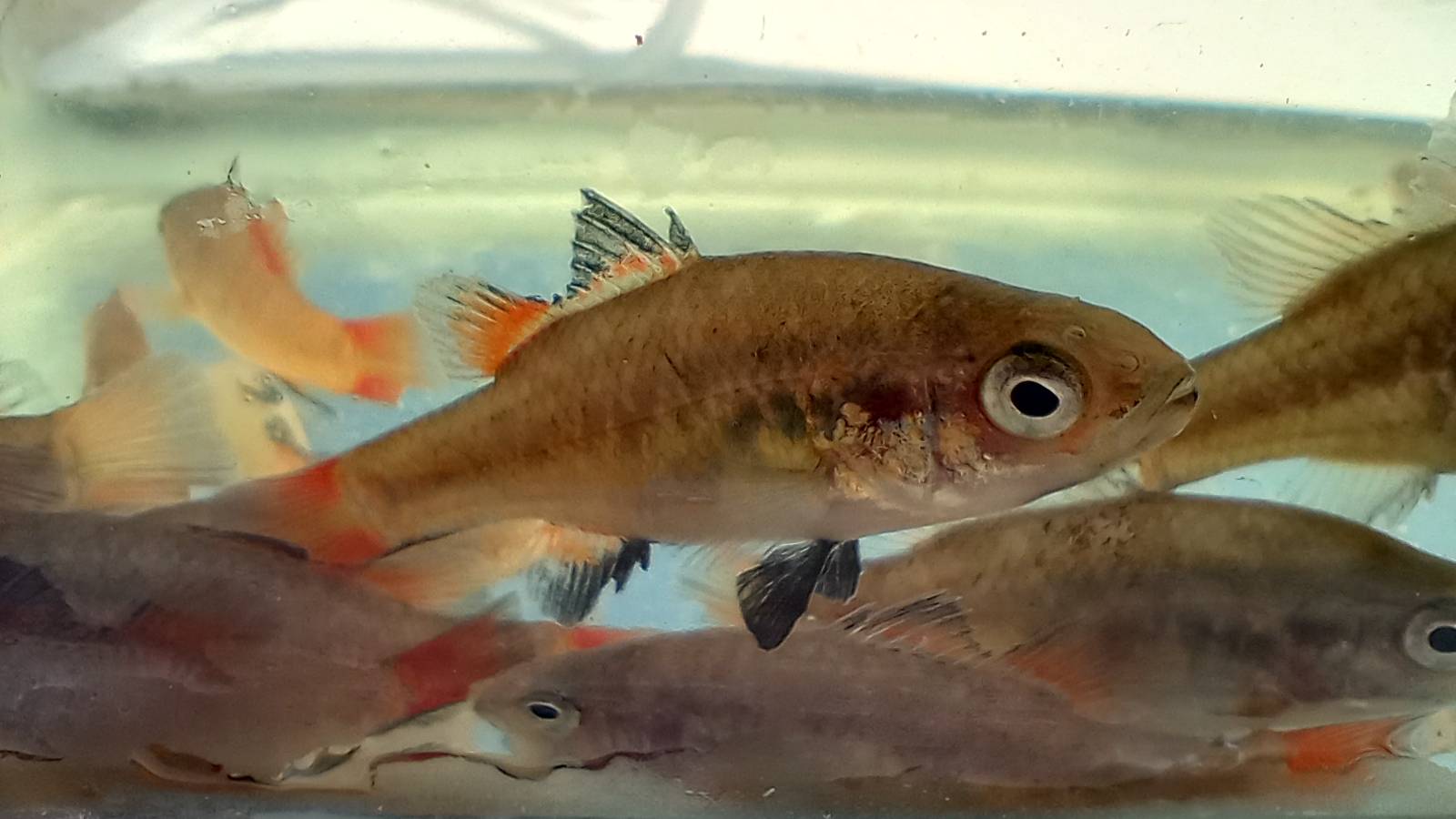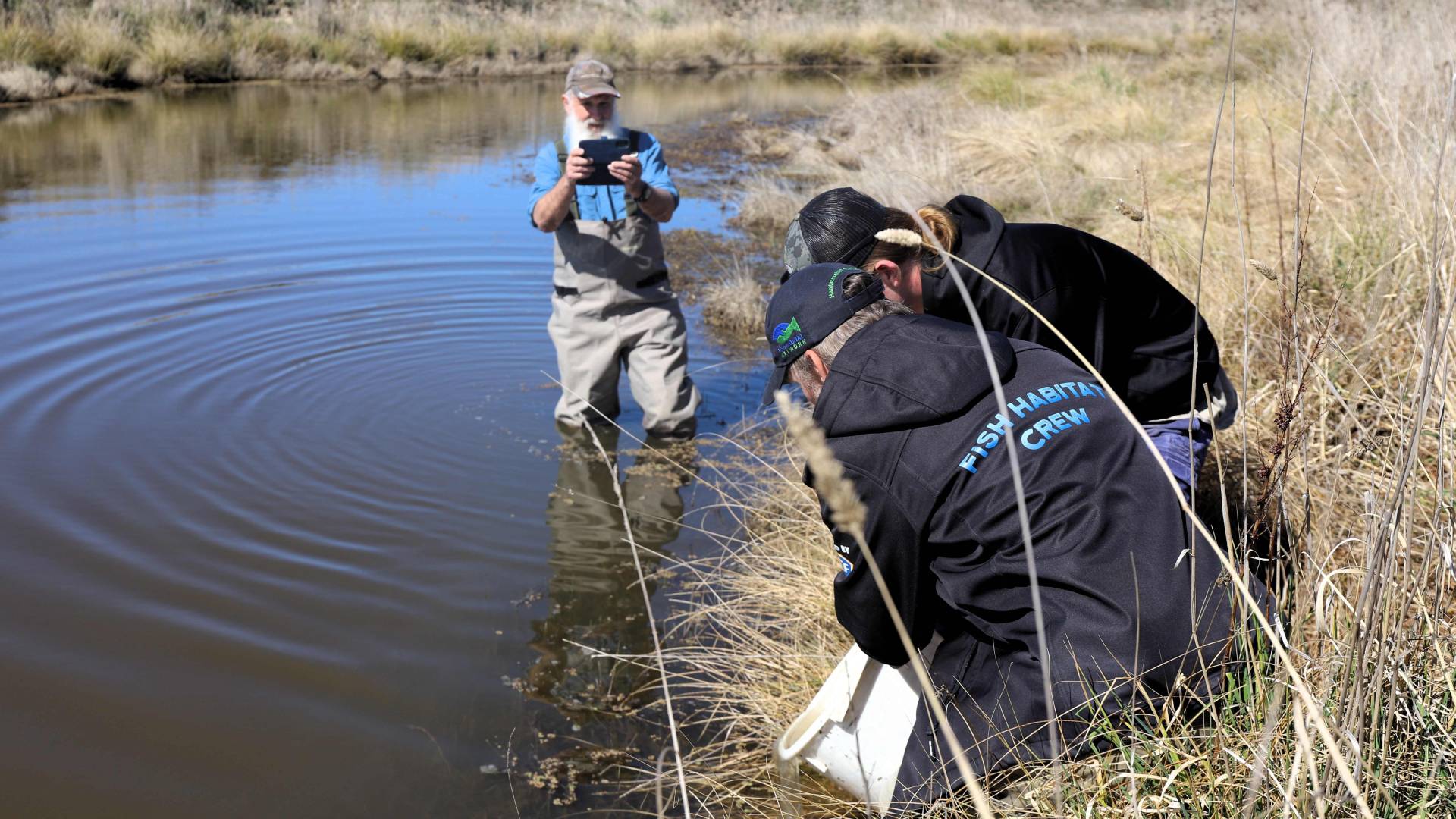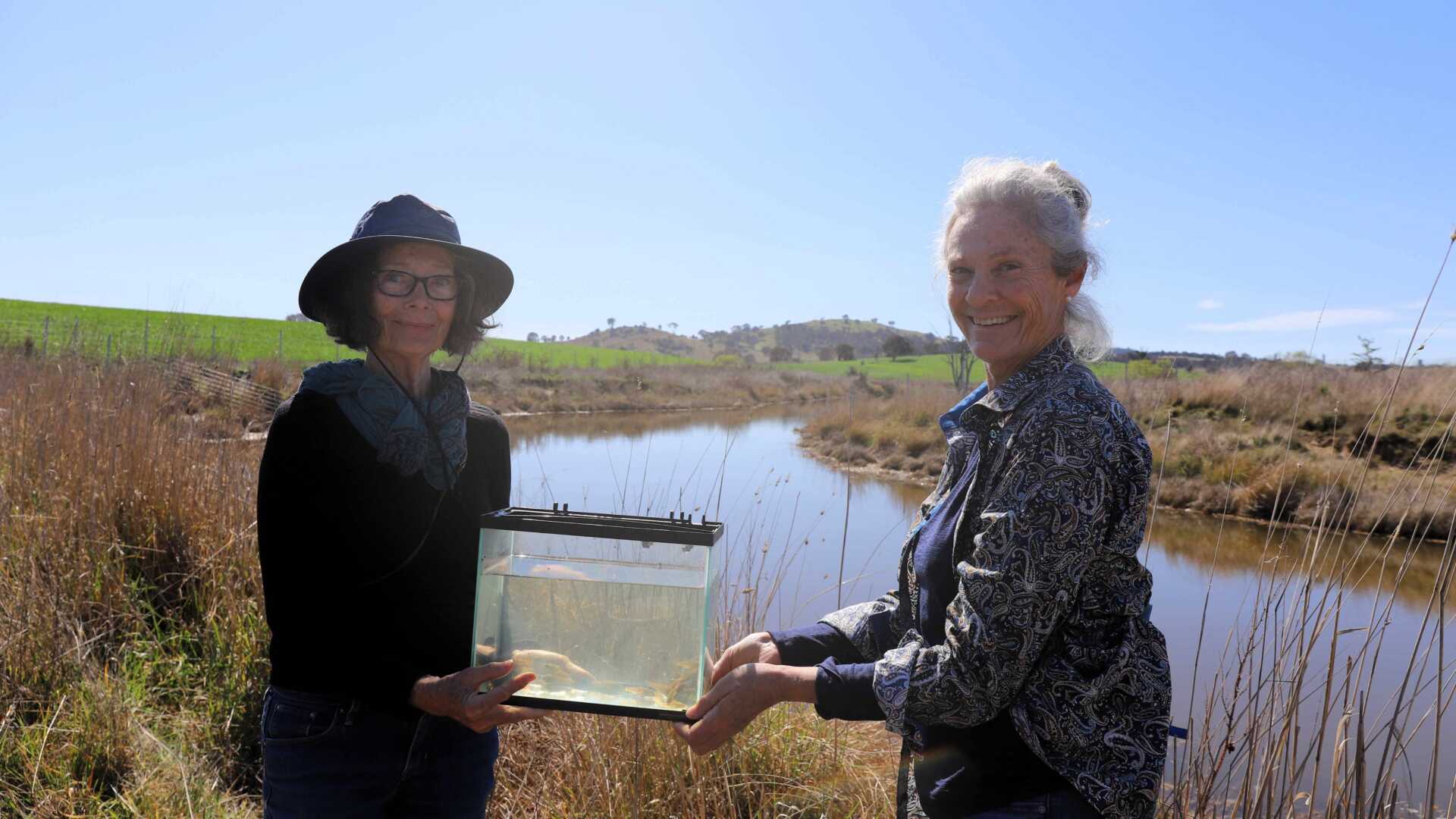From little things, big things grow: Huge effort underway to help Southern Pygmy Perch survive

As the name suggests, Southern Pygmy Perch are small in stature but they are in danger of disappearing altogether so OzFish Unlimited and Landcare NSW are embarking on a collaborative project to help restore their numbers.
The organisations are helping to restore fish habitats at Oolong Creek, 80km north of Canberra, to support the dwindling population of the species (Nannoperca australis), a small fish that grows to a maximum size of a mere 85mm.
OzFish – Australia’s fishing conservation charity, through its Dubbo River River Repair Bus and team of volunteers, have been working with Gunning District Landcare to remove invasive woody weeds from Oolong Creek, a tributary of Jerrawa Creek.
Volunteers have also worked alongside renowned fish ecologist Associate Professor Mark Lintermans from the University of Canberra and staff from the NSW Department of Primary Industries Fisheries to catch Southern Pygmy Perch at a wild breeding area, using a variety of nets to take a subset of around 200 of them to a site upstream of a waterfall so they can establish a population away from the threat of alien species.
In NSW there are only three populations that remain after widespread loss of habitat and predation from alien species like redfin and carp. The Southern Pygmy Perch is listed as vulnerable in Victorian coastal areas but in NSW they are considered an endangered species.
They are a great natural indicator of the health of our waterways – in larger streams they are an important food source for larger fish like golden perch and Murray cod as well as birds like wild heron.
“Once abundant across the state, the species has suffered major population declines and is now only found in minimal locations in NSW,” Braeden Lampard, OzFish’s Murray-Darling Basin Senior Program Manager, said.
“If action isn’t taken to preserve and support their numbers, there is a very real threat they could become extinct.”
Professor Lintermans, a freshwater scientist with more than 40 years’ experience in fisheries research and management, said a population was found in the Upper Lachlan River in 2002 but the Southern Pygmy Perch in Oolong Creek were discovered only a couple of years ago.
“The Oolong Creek population we’ve known little about until 2021 when we did a survey there,” he explained.
“There had been some schoolkids report a couple of fish a few years before and we went back and found they were at a wider distribution of sites than we thought, which was great.
“But they were missing from a section of stream upstream of a waterfall on Oolong Creek, so that’s what this translocation was about – to introduce a population into a very large, well-vegetated farm dam to provide an upstream population that would slowly percolate downstream and to establish them in a habitat that was not likely to dry out.”
He paid tribute to the local landowners who not only allowed the restoration crew access to the creek but fenced off the waterway from their cattle and planted native trees.
Sean Graham, OzFish’s Dubbo River River Repair Bus Team Leader, said everyone had their fingers crossed that the relocated fish would not only survive but thrive in their new surroundings.
“All the types of wetlands where they used to live have been destroyed or dried up so they’re just finding these marginal habitats – a small representation of the glorious wetlands that once occurred,” he said.
“Several of the females that we transported were big and fat and full of eggs and several of the males were in their beautiful orange breeding colours so with any luck, they’ll do just fine in this new habitat and make lots of babies.”
Professor Lintermans said they would continue to monitor the site and translocate more Southern pygmy perch in the coming years.
“Each of those females may have a couple of thousand eggs in so if they spawn in the next few months, then you’ve got 10 times the size of fish on the ground that you actually moved physically so that’s what we did at this time of the year,” he added.
“The beauty of doing it with small fish is that you get to know whether it’s been successful relatively quickly. So these fish were reproductively mature, they’ll spawn every year. We’ll go back next year and see whether we have any little juveniles on the ground, in which case we know that there’s been some successful breeding.
“The success for threatened fish translocation, the ideal measure is that you have offspring of offspring. The fish that you’ve put in there have grown up and bred and then the offspring from that breeding have grown up and bred so you have three generations of fish in a population.
“Then you’re confident that you know it’s gonna stick.”
Luke Pearce, the NSW Department of Primary Industries Senior Fisheries Manager – Habitat & Threatened Species Unit, said further potential sites had been identified to be natural hatcheries that would continue repopulating efforts in the region.
“At the moment we’re focusing on these refuges, or surrogate habitats of these populations, basically little zoos in landscape where the Southern Pygmy Perch will hopefully establish and persist and breed up and then we can utilise to create additional populations,” he said.
“Because the ultimate objective is to create additional populations in the connected waterway system but this is the first step in that process.”
He added that it was important to highlight that redfin are not only an alien species but highly damaging, along with carp, to native fish, particularly small-bodied species like the Southern Pygmy Perch.
“It’s astounding how many people I come across who think redfin are a native species and that they’re benign in their impact. They’re so voracious and abundant and they breed up in big numbers,” he said.
“They invade new areas and there’s an explosion in the population where they dominate the system. In that initial boom is when the real damage is done – they can decimate populations of natives and wipe them out.
“The key habitat Southern Pygmy Perch is aquatic plants and carp have a negative impact on them, uprooting them and removing them, particularly in these smaller, confined environments.
“There is strong dietary overlap – carp eat the same thing as baby pygmy perch and there’s only so much food in the system and they outcompete them for food as well.”
The first stage of the Oolong Creek project involved removing woody weeds, such as crack willow, blackberry, and white poplar, which are negatively impacting the waterway habitat along a 2km stretch of the creek from the Gary Cosgrove Bridge.
By restoring habitat and the removal of invasive vegetation, small fish like the Southern Pygmy Perch which are so important to aquatic ecosystems can live to fight another day.
The project is part of OzFish’s Driving Fish Habitat Action partnership with Landcare NSW, in collaboration with Dalton Community Association, NSW DPI Fisheries, and renowned researcher Mark Lintermans, with funding support from the NSW Recreational Fishing Trusts, the Australian Government through the CRC Program, and BCF – Boating, Camping, Fishing.





